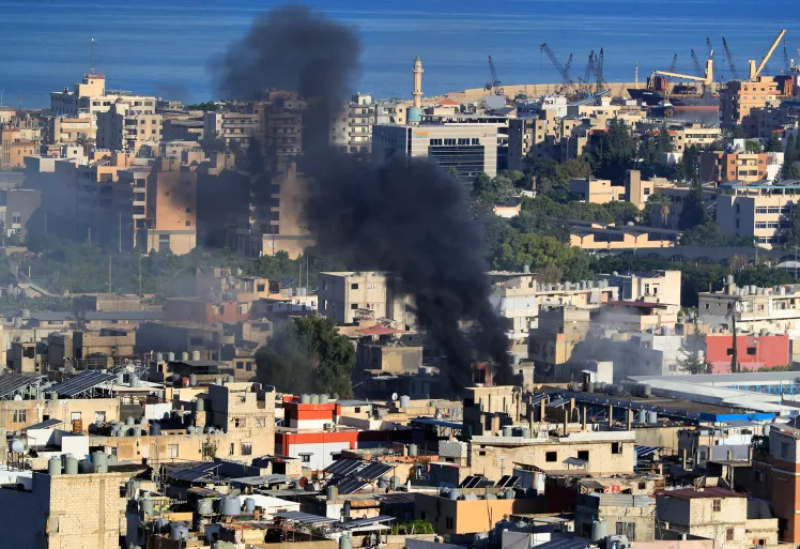
Ain Al Helwe clashes
The “Ain al-Hilweh” refugee camp for Palestinian refugees is considered the capital of refugee camps in terms of diversity in movements, factions, and organizations that include a significant number of individuals from various nationalities. It has also become akin to a capital of decision-making for the camps scattered in neighboring Arab countries, particularly in Syria, where residents have been dispersed both geographically and politically.
Among the residents, some are opposed to the “Fatah” movement, the largest faction within the Palestine Liberation Organization (PLO), which was closely associated with the late Palestinian President Yasser Arafat. Fatah has the most significant and dominant representation and used to exert near-complete control over the Palestinian camps in Lebanon. However, its decision-making centrality is now tied to the decisions of the Palestinian Authority, currently represented by Mahmoud Abbas.
A knowledgeable source on Palestinian affairs in Lebanon observes that the use of weapons in the ongoing conflicts raises suspicions about who benefits from them and how they found their way into the camp. It’s important to note that the camp was not devoid of weapons and rocket projectiles to begin with, but the intensity and range of fire now raise several questions. Especially considering that the current battles differ from those that occurred after the assassination of the Palestinian National Security chief, Abu Ashraf al-Armoushi.
Moreover, the expansion of the conflicts beyond “Al Tawari” and “taamir” areas to encompass all fronts where organizations operating under the banner of “Muslim Youth” are present is notable. Many of these groups hold extremist ideologies, and some individuals who had fled from the “Nahr al-Bared” camp have joined them.
The source continues to highlight that these rounds of clashes cannot be compared to previous ones, as fierce battles are taking place in many neighborhoods, especially in “Hatin,” “Al-Barkasat,” “Al-Safsaf,” and “Al-Ras Al-Ahmar.” These neighborhoods are witnessing control operations by Palestinian Authority forces in some areas and advances by the opposing side in others. This indicates the determination of both parties to try to decisively win the battle, regardless of the cost. This suggests that the intense clashes will not cease and are open on all fronts, and there may be significant developments that could hold surprises in terms of consolidating control, ultimately making the victor the sole decision-maker in the camp.
The source emphasizes the unique characteristics of the camp, as it is the only one where political decision-making is not confined solely within its borders. It possesses a dynamism that sets it apart from other camps, particularly in terms of not having exclusive control over decisions, especially regarding the conflict with Israel. Even some factions, movements, and organizations have participated in conflicts unrelated to the Palestinian cause, as evident in the events in Syria.
For instance, the “Islamic Jihad” organization aligned itself with the Resistance Axis during the Syrian conflict, and “Hamas” later joined the same alliance. Their decisions have become inseparable from the strategy of the Resistance Axis, indicating unity in decision-making. This is further underscored by the visits made by leaders of these organizations to Beirut’s southern suburbs to meet with Hezbollah Secretary-General Hassan Nasrallah. The recent visit by Ziyad Nakhaleh, the Secretary-General of the Islamic Jihad Movement in Palestine, and Saleh Al-Arouri, Deputy Chief of the Political Bureau of Hamas, emphasized “constant communication between resistance movements, especially in Palestine and Lebanon, to monitor all political, security, and military developments and make appropriate decisions.”
Here, the source raises questions about the nature of security coordination, especially in Lebanon, excluding the Fatah movement. Can this coordination be linked to the resurgence of clashes in Ain al-Hilweh camp just a week after the visit? The coming days will provide many insights and clues, but it’s evident, based on information from inside the camp, that there is a determination among the Palestinian National Security to resolve matters, particularly in the areas of “Hatin,” “Al-Ras Al-Ahmar,” and “Emergency.”
There is information suggesting significant progress by Fatah members, as this battle will determine not only the military situation within the camp but also the political decision-making power within it.